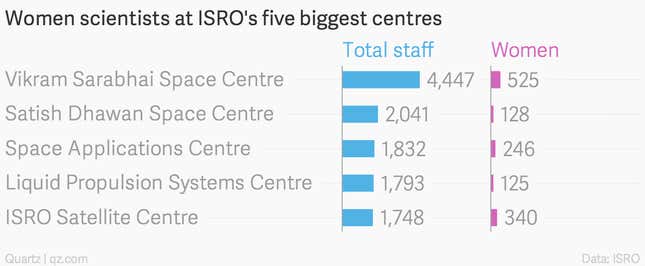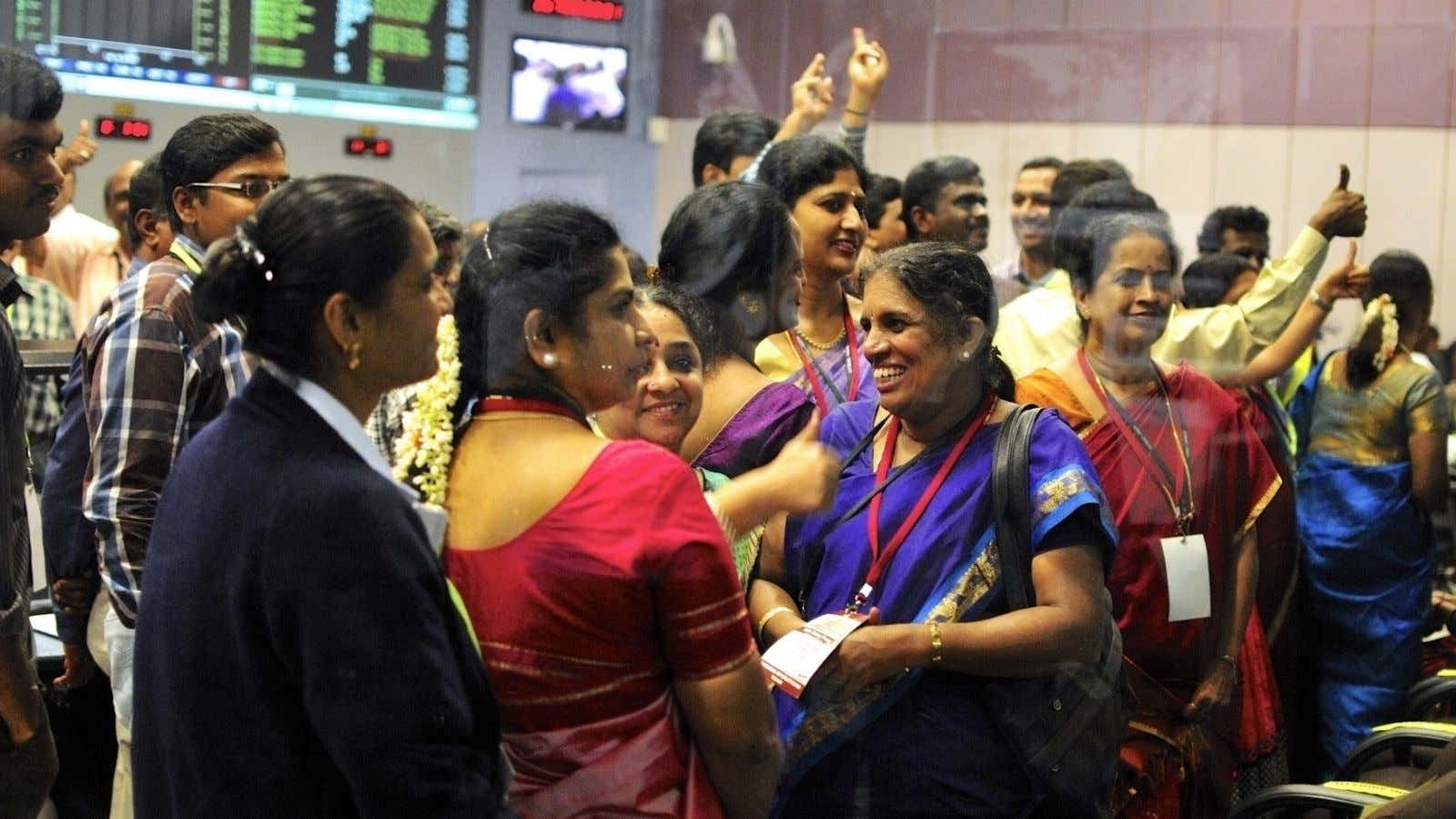The face of India’s space program has always been a man.
The seven chairmen, including the incumbent, of the Indian Space Research Organisation (ISRO)—India’s equivalent of NASA—have all been men, and it is typically male scientists who front the serious press conferences ISRO conducts after satellite launches.
But there’s a crucial band of women, working across the entire range of India’s space programme, that comprise about 20% of ISRO’s total workforce of 14,246 employees. About 10% of the total staff, or 1,654, are women engineers.

While smaller than other programmes—at NASA, for instance, about 20% of all engineers are women—Indian women space scientists have risen to prominence in recent years.
In 2011, the launch and deployment of the GSAT-12, a communication satellite, was helmed by three women scientists at ISRO: Project director T.K. Anuradha, mission director Pramodha Hegde and operations director Anuradha Prakasham.
“The feeling is like delivering a baby,” Anuradha, perhaps the first woman to head such an ISRO project, told a newspaper after the launch.
Then, in 2012, N. Valarmathi led the launch of RISAT-1, a radar imaging satellite, sparking celebrations in a small Tamil Nadu town of Ariyalur, where she spent her childhood.
There’s also Tessy Thomas, the scientist who headed the Agni-V programme, an intercontinental ballistic missile. Thomas, though, works for the Defence Research and Development Organisation, not ISRO, but is among the most recognizable women scientists in the country.
And at ISRO, the 500 scientists who worked on the agency’s Mars Orbiter Mission also include women like Minal Sampath, a systems engineer.
“I forget I am a woman sometimes, working in such an organisation,” she told the BBC earlier this year. “Maybe it’s because we spend a lot of time working in clean rooms with full suits on, so you can’t tell who is male or female.”
